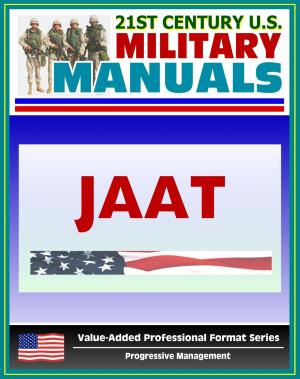Past and Potential Theory for Special Warfare Operational Art: People's War and Contentious Politics – Guerilla Warfare and Insurgency as Theories from 1952 to 1965, Adaptation of Mao Zedong’s Idea
Nonfiction, History, Military, United States| Author: | Progressive Management | ISBN: | 9781370543946 |
| Publisher: | Progressive Management | Publication: | February 18, 2017 |
| Imprint: | Smashwords Edition | Language: | English |
| Author: | Progressive Management |
| ISBN: | 9781370543946 |
| Publisher: | Progressive Management |
| Publication: | February 18, 2017 |
| Imprint: | Smashwords Edition |
| Language: | English |
This excellent report has been professionally converted for accurate flowing-text e-book format reproduction. In the context of escalating instability in the Middle East, Eastern Europe, and Africa, special warfare may offer policymakers a valuable strategic option. To succeed, however, special warfare campaigns that apply operational art must be founded upon distinct and sound theories of war and warfare. This monograph argues that from 1952-1965, the US Army Special Forces developed two theories of special warfare, one of guerilla warfare and one of insurgency (revolutionary war). Special Forces' institutional theory of insurgency, an adaptation of Mao Zedong's theory of people's war, remains a primary framework for special warfare operational artists. Furthermore, this monograph contends that a synthetic academic theory of contentious politics provides a more sophisticated theory of insurgency that has potential value for future applications of special warfare operational art.
Current US policy explicitly favors empowering regional partners as a means to avoid costly troop deployments while actively addressing local and international security threats. In the context of escalating instability in the Middle East, Eastern Europe, and Africa, special warfare may offer policymakers a strategic option that provides more depth than targeted strikes and less fiscal commitment than the execution of large-scale wide area security operations. To provide such options, special warfare campaigns that evoke the application of operational art must be informed by the conceptual distinctions of the forms of war and warfare. Without conceptual clarity, special warfare campaigns are doomed to failure.
As Samuel Huntington described several decades ago, guerilla warfare is a form of warfare, while insurgency, or revolutionary war, is a type of war. Specifically, Huntington defined guerilla warfare as "a form of warfare by which the strategically weak side assumes the tactical offensive in selected forms, times, and places," while describing revolutionary war as "a struggle between a nongovernmental group and a government in which the latter attempts to destroy the former by some or all means at its command, and the nongovernmental group attempts by all the means at its command to replace the government in some or all of its territory." Huntington's definitions provide much-needed theoretical distinction on a subject that, at least in the English-speaking world, is fraught with terminology that often confuses methods and outcomes.
This excellent report has been professionally converted for accurate flowing-text e-book format reproduction. In the context of escalating instability in the Middle East, Eastern Europe, and Africa, special warfare may offer policymakers a valuable strategic option. To succeed, however, special warfare campaigns that apply operational art must be founded upon distinct and sound theories of war and warfare. This monograph argues that from 1952-1965, the US Army Special Forces developed two theories of special warfare, one of guerilla warfare and one of insurgency (revolutionary war). Special Forces' institutional theory of insurgency, an adaptation of Mao Zedong's theory of people's war, remains a primary framework for special warfare operational artists. Furthermore, this monograph contends that a synthetic academic theory of contentious politics provides a more sophisticated theory of insurgency that has potential value for future applications of special warfare operational art.
Current US policy explicitly favors empowering regional partners as a means to avoid costly troop deployments while actively addressing local and international security threats. In the context of escalating instability in the Middle East, Eastern Europe, and Africa, special warfare may offer policymakers a strategic option that provides more depth than targeted strikes and less fiscal commitment than the execution of large-scale wide area security operations. To provide such options, special warfare campaigns that evoke the application of operational art must be informed by the conceptual distinctions of the forms of war and warfare. Without conceptual clarity, special warfare campaigns are doomed to failure.
As Samuel Huntington described several decades ago, guerilla warfare is a form of warfare, while insurgency, or revolutionary war, is a type of war. Specifically, Huntington defined guerilla warfare as "a form of warfare by which the strategically weak side assumes the tactical offensive in selected forms, times, and places," while describing revolutionary war as "a struggle between a nongovernmental group and a government in which the latter attempts to destroy the former by some or all means at its command, and the nongovernmental group attempts by all the means at its command to replace the government in some or all of its territory." Huntington's definitions provide much-needed theoretical distinction on a subject that, at least in the English-speaking world, is fraught with terminology that often confuses methods and outcomes.















